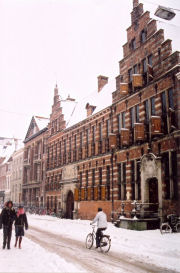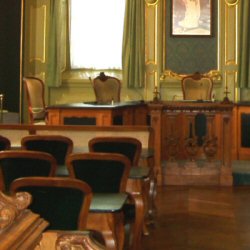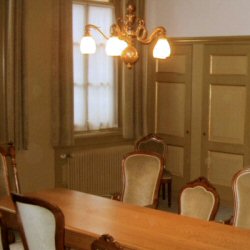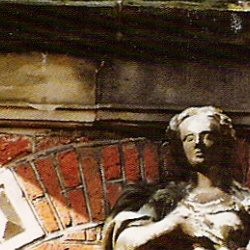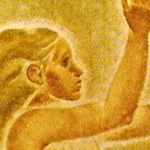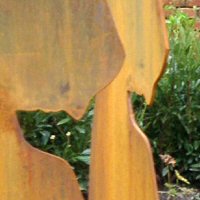Photo album
Click on the picture for full size.
The style of the faculty building façade is usually termed Dutch Renaissance. In 1627 the left and middle sections of the façade were added to the original building on the right. In 1717 the right-hand façade section was in its turn adapted to the style of the left and middle sections, following the 1627 design.
At the beginning of the Oude Boteringestraat, right in city centre one of the most striking buildings of Groningen is to be found. It is locally known as ‘the Court of Justice’, because this is where the court used to be held from 1755 till 1998.The ‘old courtroom' is used by the faculty for such occasions as its opening of the academic year and degree certificate ceremonies.
To the faculty board it is a great joy every time to have their weekly meeting in the former council room, which is also used for job interviews and other meetings.
In the façade, over the frontdoor, there is a sandstone Justitia (justice) figure. In all probability this is the same figure that was placed over the entrance of the town hall in 1624. So it must have been put here in Oude Boteringestraat between 1755, when the High Court of Justice moved in, and 1774, as it appears on a drawing dating from that year.
On entering the faculty building one is immediately struck by the mural by Herman Dijkstra (1904-1976). It shows an allegorical representation of Libertas (freedom). The Latin inscription reads: LIBERTATEM RECUPERAMUS AUT MORTEM SERVITUTI ANTEPONAMUS (‘Let us regain freedom, or else prefer death over slavery’).
| Last modified: | 14 June 2023 3.51 p.m. |
View this page in: Nederlands

